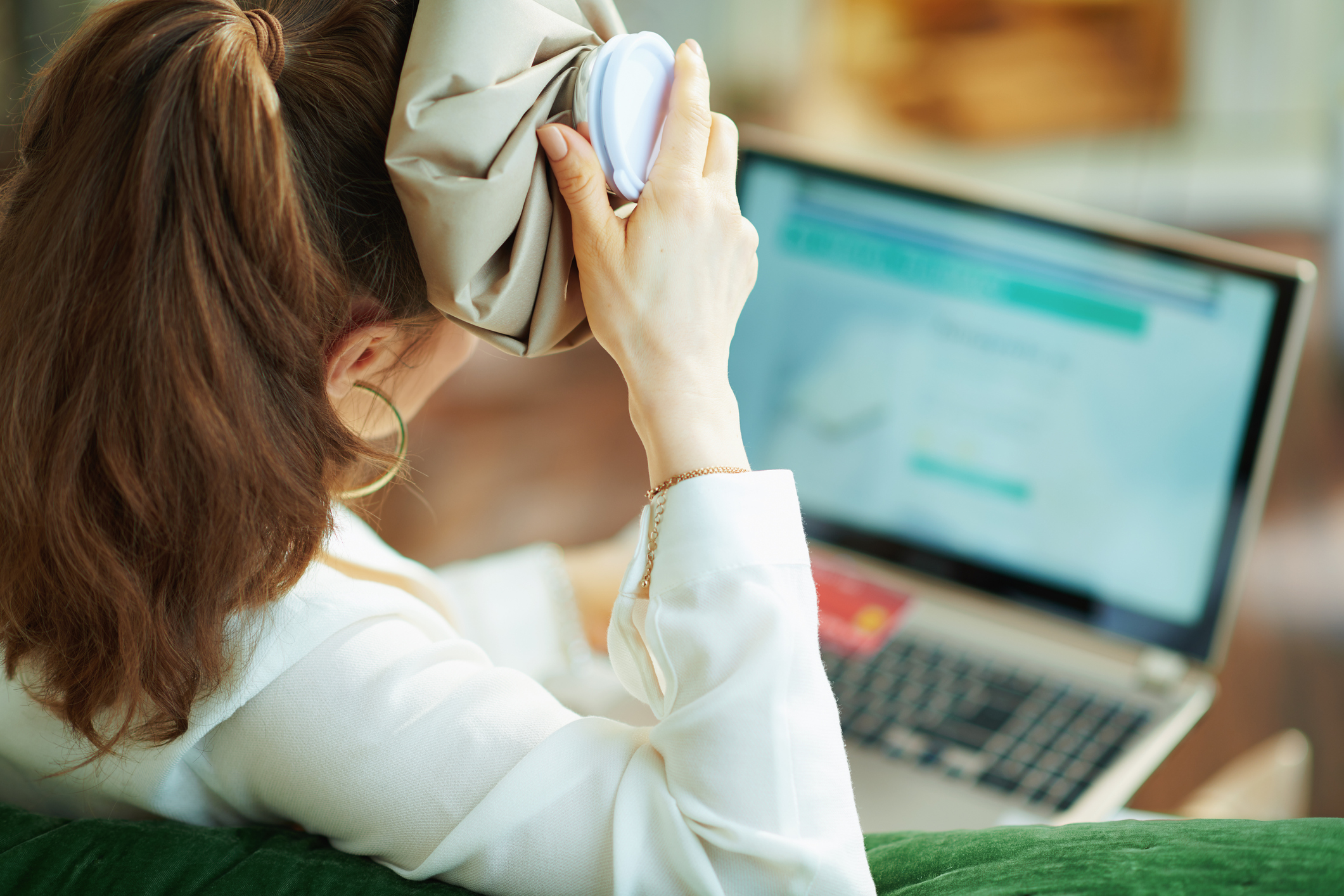
Acute Migraine attacks: How to manage them.

FOR ACUTE MIGRAINE ATTACKS, there are several options to managing them and help alleviate the pain and discomfort, apart from the medical treatments prescribed by your neurologist.
ICE
Ice is usually a good non-medical treatment for your migraine. Use any ice pack that you have at home to help numb the pain and take the edge off of an attack. Some people have also reported that drinking an icy beverage can provide relief. Additionally, specially designed accessories exist, such as the Headache Hat, a cotton-spandex microfleece designed by a migraine patient which can be worn to cover the head. Migraine cooling headache pads are another option, which sometimes are lightly scented.
Some people have found that lying down in a dark room and placing an ice pack on your head and a heat pack on your feet can alleviate the migraine symptoms. Alternatively, you can soak your feet in a tub of hot water and place an ice pack on your head. The combination of hot and cold at the same time may be soothing and can provide some relief during a migraine attack.
SLEEP
Many people with migraine find that sleeping during an attack can provide significant, or even full, relief. Deliberate yawning, wearing an eye mask to shut out the light, and resting in a dark, quiet room can help minimize additional pain caused by light and sound during an attack. In addition, a compression eye mask and pillow that can be frozen can help soothe tired, puffy eyes, provide cooling relief, and block out light.
SHOWER
There are several bath and shower options that may be helpful during an acute migraine attack. For example, if odor is not a trigger for your migraine, you can blend your own essential oils and relax in a bath during and/or after an attack. This may help to relieve the tension experienced in the head, neck, and shoulders. Soaking your feet in hot water can also help take the edge off during an attack. Some people may find taking a hot shower is more helpful than a cold one. However, it is important to point out that it can be a dangerous practice for those suffering from hemiplegic migraine.
SCENTS
Some common essential oils usually mentioned by people who suffer from migraine are lavender, eucalyptus, peppermint, and lemon, which can be mixed in blends and rubbed onto pressure points or areas like the back of the neck, temples, and forehead during an attack.
CAFFEINE
Caffeine can be a double-edged sword. It can be a remedy or a trigger. Healthcare professionals usually don’t recommend it for those with chronic migraine, but in episodic acute attacks, it can be used to enhance the effectiveness of some medications. However, caffeine can also increase your risk of a rebound headache or medication overuse headache, so it is important to proceed with caution and medical supervision.
GINGER
Eating ginger sweets and candies may provide relief from the nausea associated with a migraine attack, and some studies suggest that the right dose of ginger may even stop the episode from occurring for some patients.
DRINKING WATER
Finally, being hydrated is is key. Make sure you drink fluids at the first symptoms of an attack or during the early signs. Dehydration is a known migraine trigger, so make sure you are drinking enough water. Some people may find additional electrolytes and salts more helpful than hydration through just water alone, for example, you can try sports drinks which can be a good source of these, just watch out for added sugars.
REMEMBER, EVERY MIGRAINE EPISODE IS DIFFERENT FOR EACH PATIENT, SO ALWAYS FOLLOW YOUR HEALTHCARE PROFESIONAL’S ADVICE.
Source: migraineworldsummit.com/tools/






